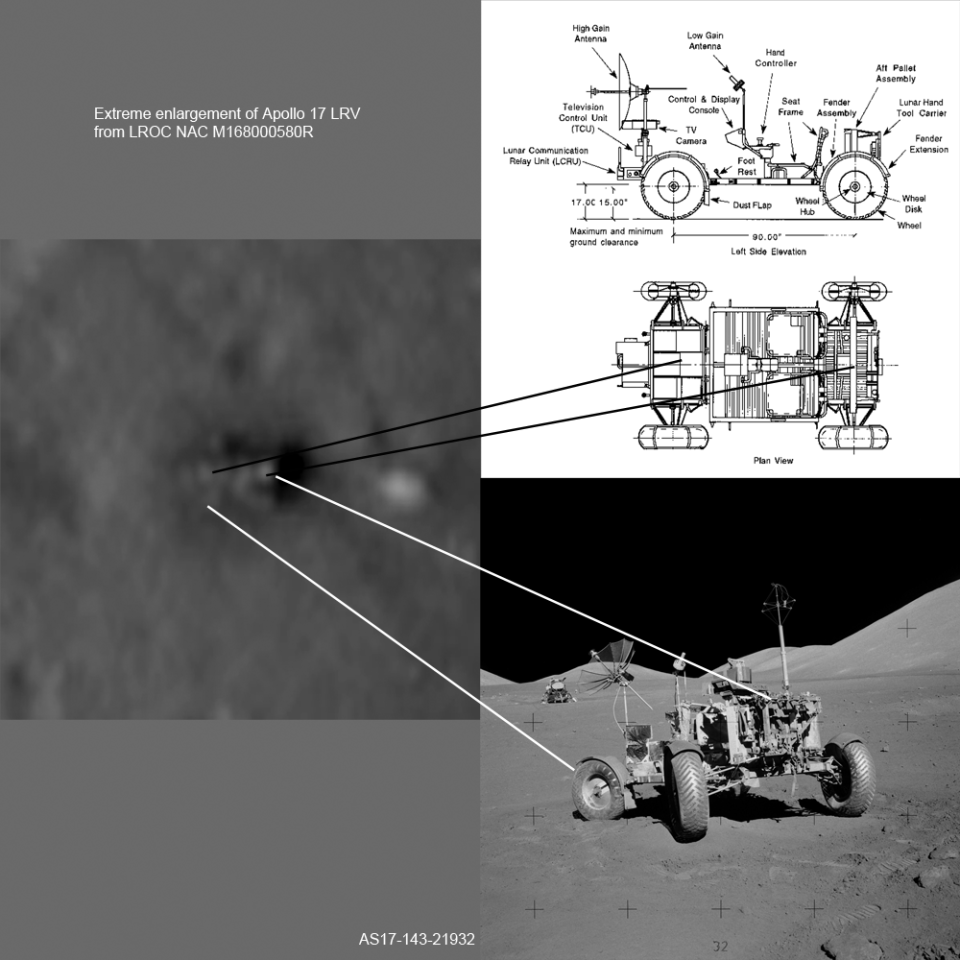True story: when I was a little kid and was at an observatory looking at the Moon through a telescope, I loudly proclaimed "I think I can see one of the moon buggies!" Everyone laughed, and I felt stupid. Well, several decades later, I've been somewhat vindicated. Although it's not an earthbound telescope, NASA's Lunar Reconnaissance Orbiter Camera (LROC) did recently capture images of the Apollo 12, 14 and 17 landing sites. The Apollo 17 lunar rover is indeed visible, as are the descent stages of the three spacecraft, and foot paths made by the astronauts.
The LROC was launched in June of 2009, and had been orbiting and photographing the Moon with its Narrow and Wide Angle Cameras ever since. Although it has usually held a near-circular orbit at an average altitude of 31 miles (50 km) above the lunar surface, on August 10th NASA's Goddard Space Flight Center temporarily altered its orbit to a more oval configuration, that brought it as low as 13 miles (21 km). The result were the photos released yesterday, that show the Apollo landing sites in greater detail than ever before.
Yesterday also marked the end of the altered orbit, with the spacecraft having since returned to its regular altitude.

Along with the rover, descent stages and footpaths, rover tire tracks can also be seen, along with scientific equipment placed on the lunar soil by the astronauts. The equipment was part of the Apollo Lunar Surface Experiments Package (ALSEP), which was designed to monitor the moon's environment and interior.
Some of the details of the Apollo 17 landing site are highlighted in the video below.
All photos courtesy NASA/Goddard Space Flight Center/Arizona State University











